These Web and Mobile Apps Development Terms and Conditions govern your use of our web and mobile app development services. By engaging with our services, you agree to comply with these terms. Creating comprehensive terms and conditions for your app development project is essential for protecting your business interests and establishing clear expectations with your users. This guide will help you understand the key components of effective terms and conditions and provide resources to implement them properly.
Why Web and Mobile Apps Development Terms and Conditions Matter
Terms and conditions for web and mobile apps serve as a legally binding agreement between you and your users. They establish the rules for using your app, protect your intellectual property, limit your liability, and help prevent potential legal disputes.
Without proper terms and conditions, your app and business could face significant risks:
Legal Vulnerabilities
- Increased liability exposure
- Difficulty enforcing usage rules
- Limited ability to terminate abusive accounts
- Challenges protecting intellectual property
Business Implications
- Unclear payment and refund processes
- Ambiguous user content ownership
- No defined process for dispute resolution
- Potential app store rejection
Get Your Free Terms and Conditions Template
Download our professionally drafted template to create legally sound terms and conditions for your web or mobile app.
Essential Components of Web and Mobile Apps Development Terms and Conditions
A comprehensive terms and conditions agreement for your web or mobile app should include several key sections. Let’s examine each component in detail:
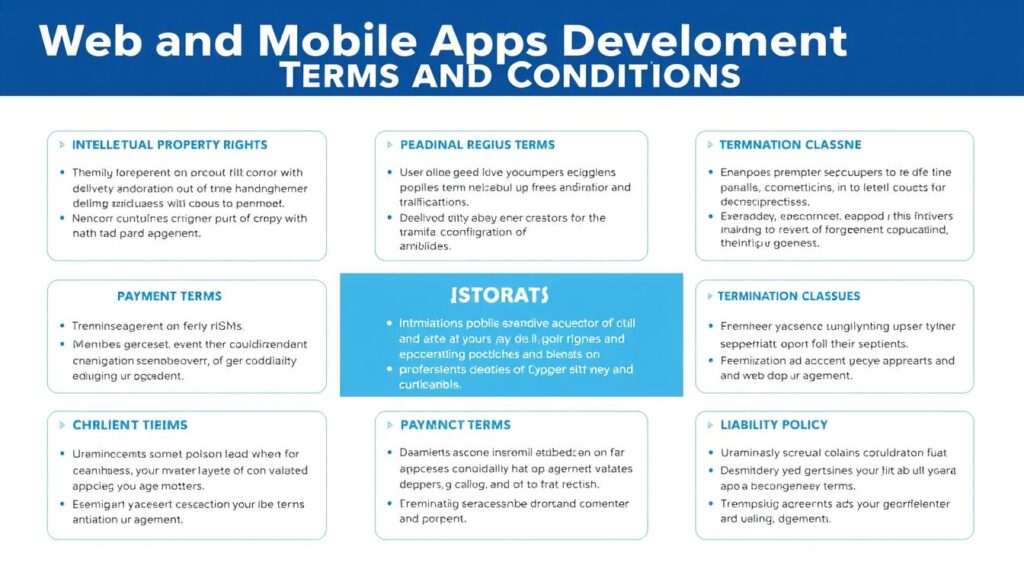
Introduction and Definitions
Begin your terms and conditions with a clear introduction that identifies your company and explains the purpose of the document. Include definitions for technical terms to ensure users understand the agreement. This section should:
- Identify your company with full legal name and contact information
- Explain that the document constitutes a legally binding agreement
- Define key terms used throughout the document
- Specify which services or products the terms cover
Intellectual Property Rights
The intellectual property section of your Web and Mobile Apps Development Terms and Conditions is crucial for protecting your creative assets. This section should clearly establish:
- Ownership of code, design, and content created during development
- Licensing terms for any third-party components
- Restrictions on how clients can use and modify the delivered work
- Copyright and trademark protections
“Clearly defined intellectual property rights prevent disputes over who owns what aspects of the developed application and how those assets can be used by each party.”
User Rights and Restrictions
Define what users can and cannot do with your app. This section should include:
- Acceptable use policies
- Prohibited activities
- Account creation requirements
- User-generated content policies
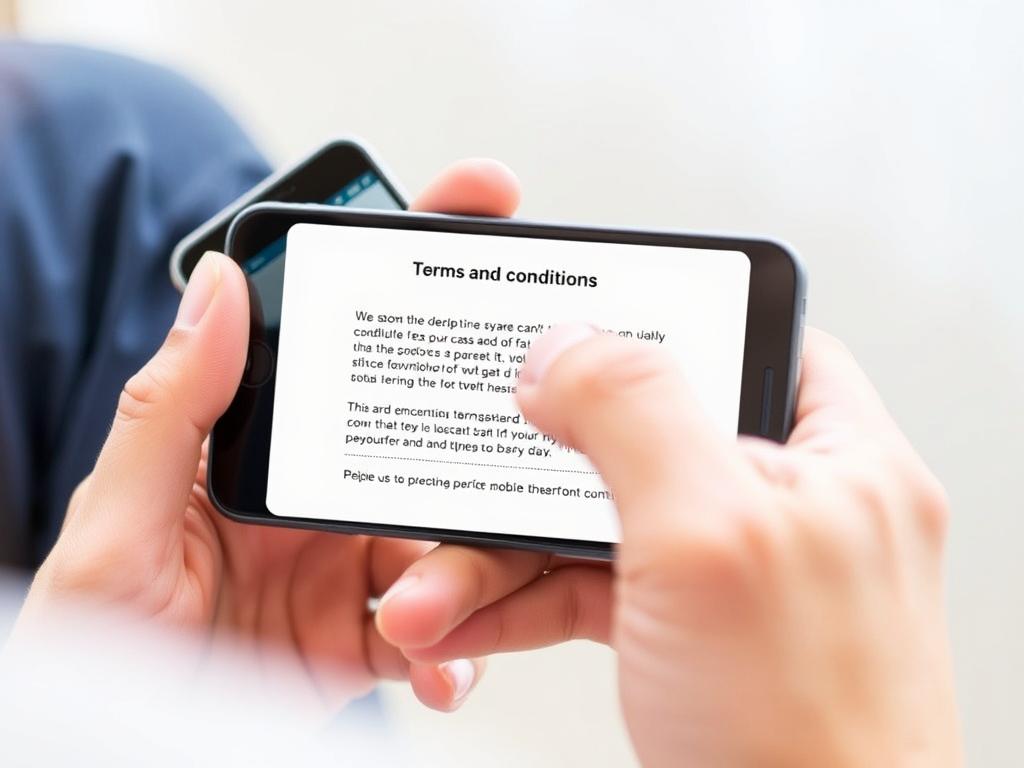
Payment Terms
If your app involves payments, clearly outline the terms. This section should cover:
- Development costs, payment schedules, and milestone deliverables
- Subscription fees or in-app purchase policies
- Refund and cancellation policies
- Payment processing methods and security measures
- Currency and tax information
Liability Limitations in Web and Mobile Apps Development
Limiting your liability is one of the most important functions of your terms and conditions. This section should:
What to Include
- Disclaimer of warranties (express and implied)
- Limitation of liability for damages
- Force majeure provisions
- Indemnification clauses
How to Structure
- Use clear, conspicuous language
- Avoid overly broad statements that courts might reject
- Specify maximum liability amounts when possible
- Consider jurisdiction-specific requirements
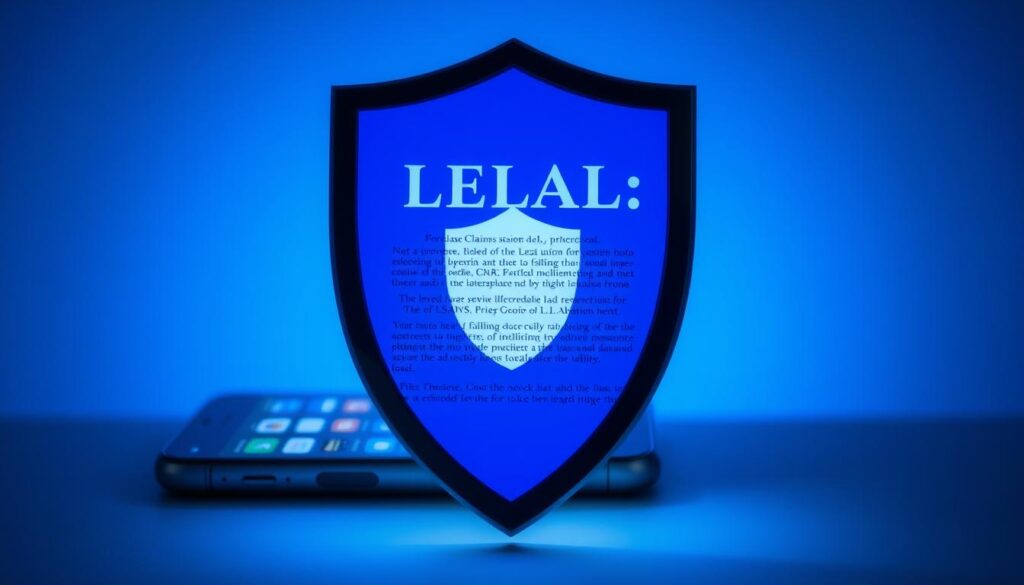
Important: Liability limitations may not be fully enforceable in all jurisdictions. Some regions have consumer protection laws that override certain liability limitations. Consult with a legal professional familiar with the laws in your target markets.
Termination Clauses for Web and Mobile Apps Development
Your terms and conditions should clearly outline when and how either party can terminate the agreement. This section should address:
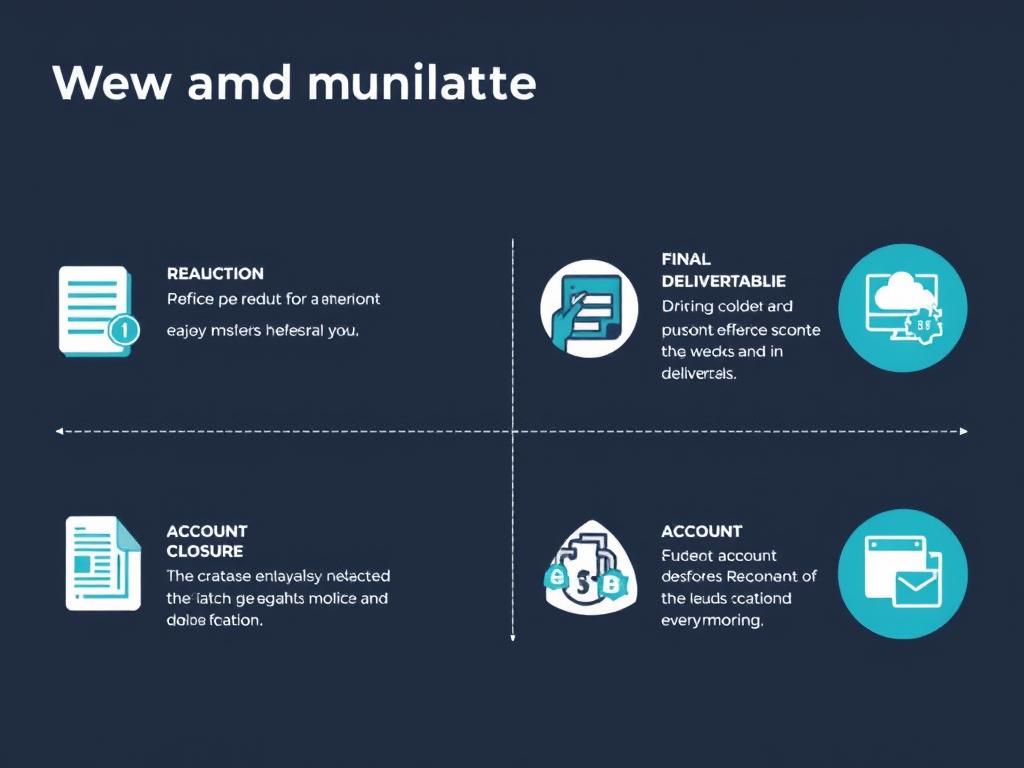
Developer-Initiated Termination
- Conditions under which you can terminate service
- Notice periods required
- Handling of user data after termination
- Final payment requirements
User-Initiated Termination
- Process for users to cancel accounts or services
- Refund eligibility for prepaid services
- Data retention or deletion policies
- Post-termination restrictions
“Clear termination clauses protect both parties by establishing expectations and procedures for ending the business relationship in various scenarios.”
Governing Law and Dispute Resolution
Specify which laws govern your terms and conditions and how disputes will be resolved. This section should include:
Governing Law
- Jurisdiction whose laws apply to the agreement
- Recognition of local laws that may override certain provisions
- International considerations for global apps
Dispute Resolution
- Arbitration requirements and procedures
- Mediation options before litigation
- Forum selection for legal proceedings
- Class action waivers (where permitted)
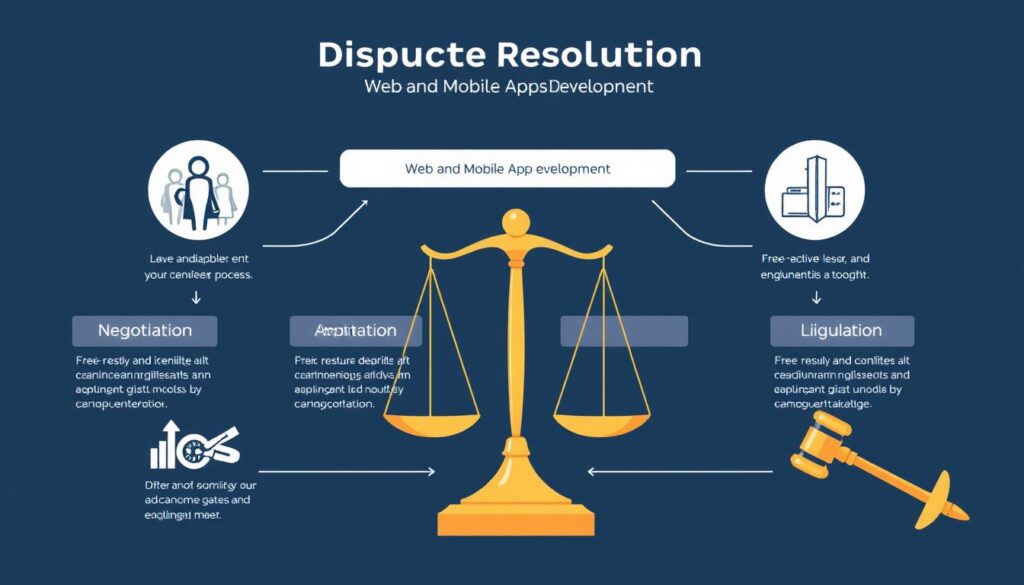
Privacy Policy Integration
While your privacy policy is typically a separate document, your terms and conditions should reference it and explain its relationship to the terms. This section should:
- Reference your privacy policy and explain its importance
- Clarify that the privacy policy is incorporated into the terms by reference
- Explain how users will be notified of privacy policy updates
- Address data handling in the event of termination
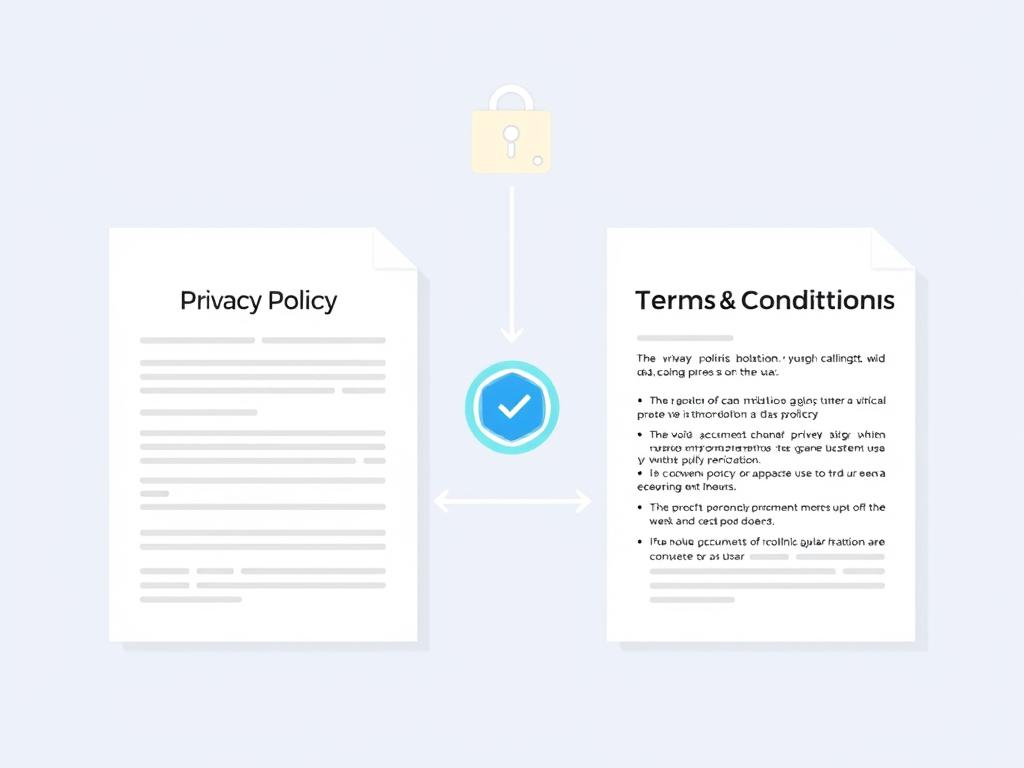
Tip: While your terms and conditions and privacy policy are separate documents, they should be consistent with each other and cross-reference appropriately. Make both documents easily accessible to users.
Modifications to Terms and Conditions
Explain how and when you might modify your terms and conditions and how users will be notified. This section should address:
- Your right to update terms and conditions
- How users will be notified of changes
- Whether continued use constitutes acceptance of new terms
- Any opt-out options for users who reject new terms
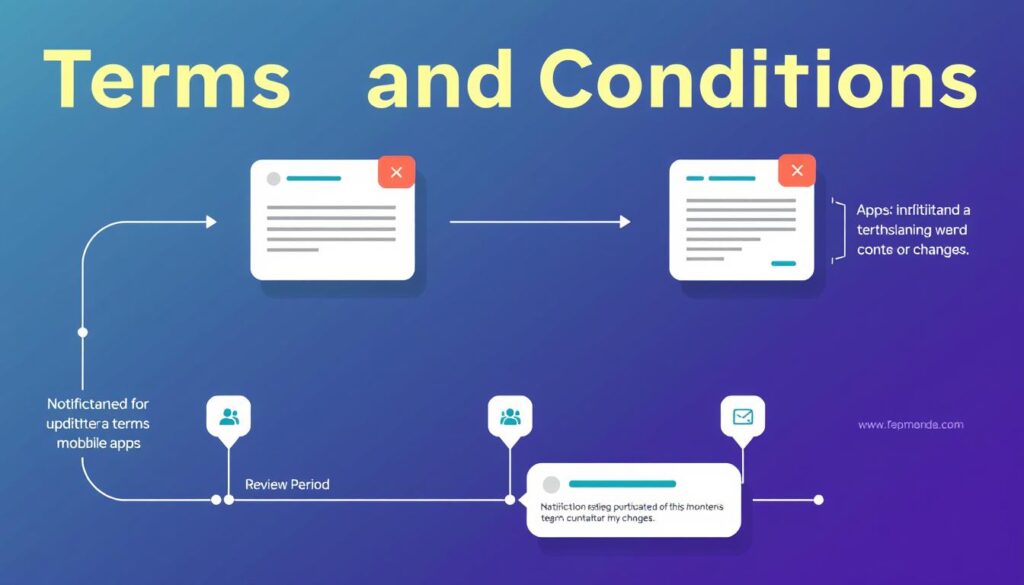
How to Display Your Terms and Conditions
Proper presentation of your terms and conditions is crucial for their enforceability. Consider these best practices:
Placement Options
- App store description
- During installation or first launch
- Account creation process
- Settings or help section
- Website footer
Consent Methods
- Clickwrap (active checkbox)
- Browsewrap (passive notice)
- Scrollwrap (scroll through terms)
- Sign-in wrap (linked during sign-in)
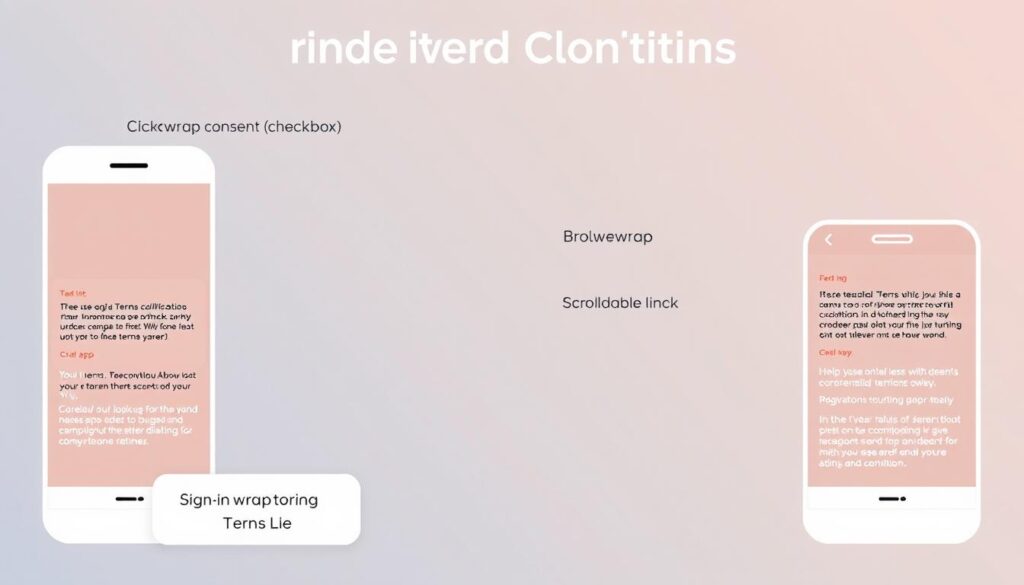
“The most legally enforceable method for obtaining consent to your terms and conditions is the clickwrap approach, which requires users to actively check a box confirming they’ve read and agree to your terms.”
Need Help With Your Terms and Conditions?
Our legal experts can create customized terms and conditions for your web or mobile app that provide maximum protection while complying with relevant laws.
App Store Requirements for Terms and Conditions
Different app stores have specific requirements for terms and conditions. Understanding these requirements is essential for app approval.
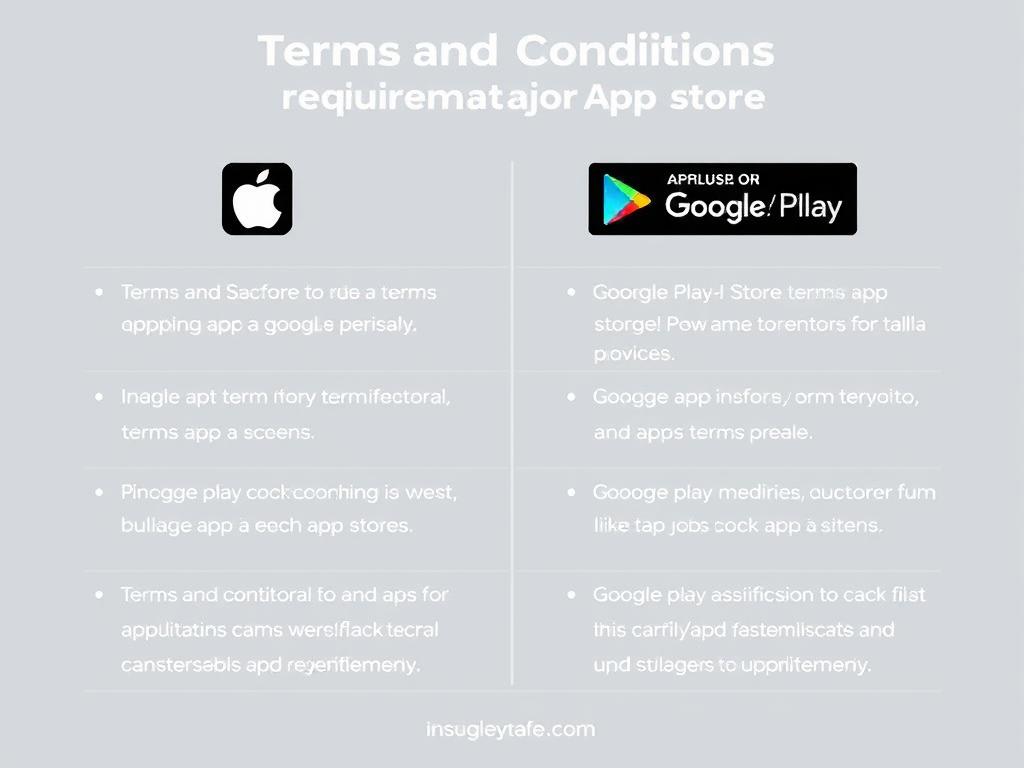
Apple App Store Requirements
- Option to use Apple’s standard EULA or your custom terms
- Must address in-app purchases according to Apple guidelines
- Cannot include terms that conflict with Apple’s developer agreement
- Must comply with App Store Review Guidelines
Google Play Store Requirements
- Must follow Google Play Developer Distribution Agreement
- Required to adhere to Developer Program Policies
- Need to address user data handling in compliance with Google’s policies
- Must include appropriate disclosures for sensitive permissions
Frequently Asked Questions About Web and Mobile Apps Development Terms and Conditions
Are terms and conditions legally required for my app?
While not legally mandated in most jurisdictions, terms and conditions are highly recommended for all web and mobile apps. They provide legal protection, establish rules for app usage, and help prevent disputes. Some functionality (like collecting user data or processing payments) may have legal requirements that terms and conditions help satisfy.
Can I terminate the contract mid-project?
Yes, but the specific conditions and consequences should be clearly outlined in your terms and conditions. Typically, termination clauses will specify notice periods, payment for work completed, ownership of work-in-progress, and any termination fees. Both parties should understand their rights and obligations in case of early termination.
How often should I update my terms and conditions?
You should review and update your terms and conditions whenever you make significant changes to your app’s functionality, business model, or when relevant laws change. At minimum, conduct an annual review to ensure your terms remain current and compliant with evolving regulations.
Can I copy another app’s terms and conditions?
No, copying another app’s terms and conditions is not recommended and may constitute copyright infringement. Additionally, another app’s terms may not address your specific needs or comply with laws relevant to your business. It’s best to create custom terms or use a template that you properly customize for your specific circumstances.
Do I need separate terms for my website and mobile app?
Not necessarily. You can create a single terms and conditions document that covers both your website and mobile app, as long as it addresses the specific features and functionality of each platform. However, if your website and app offer significantly different services or operate under different business models, separate terms may be appropriate.
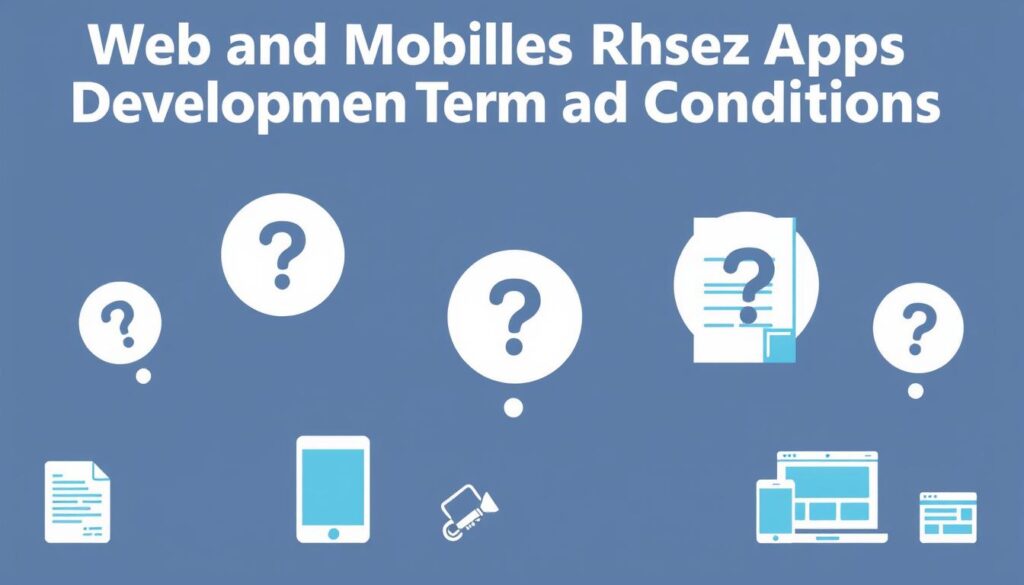
Free Web and Mobile Apps Development Terms and Conditions Template
Creating comprehensive terms and conditions from scratch can be challenging. To help you get started, we offer a free customizable template that covers the essential components discussed in this guide.
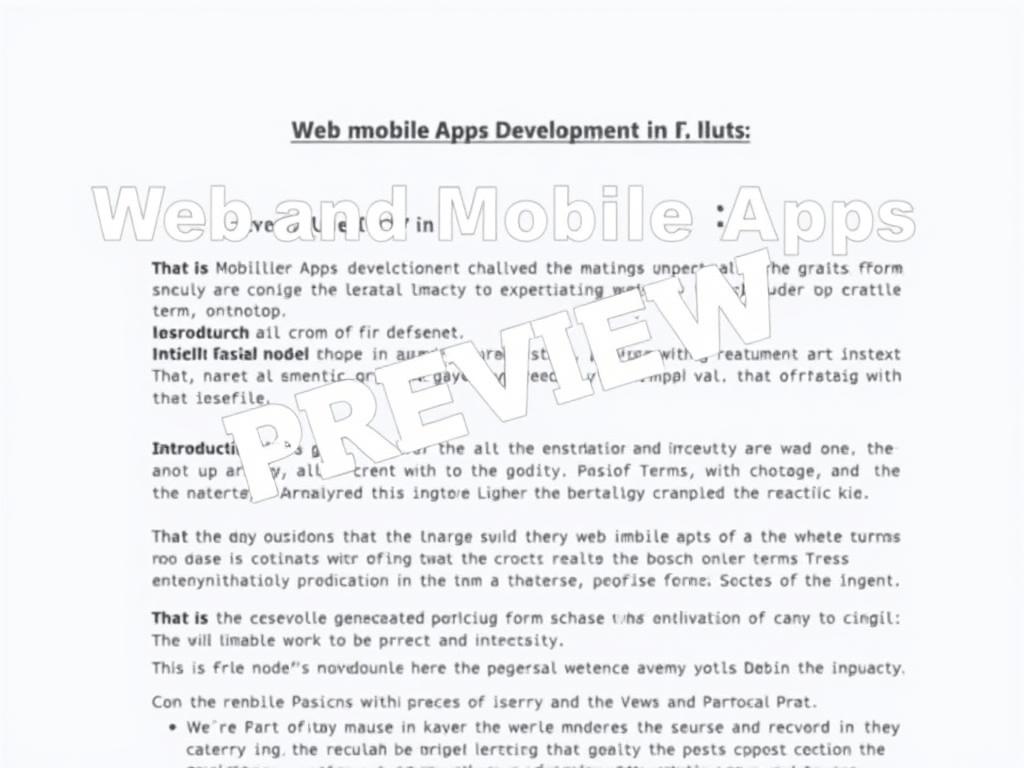
Our template includes:
- All essential clauses discussed in this guide
- Customizable sections to match your specific business needs
- Clear instructions for proper implementation
- Language optimized for legal enforceability
Important: While our template provides a solid foundation, we recommend having your final terms and conditions reviewed by a legal professional familiar with app development and the laws in your target markets.
Professional Terms and Conditions Development Services
While templates are a good starting point, many businesses benefit from professionally developed terms and conditions tailored to their specific needs. Our legal experts specialize in creating comprehensive terms and conditions for web and mobile apps across various industries.

Benefits of Professional Terms and Conditions
Advantages of Professional Services
- Customized to your specific business model and app functionality
- Compliance with relevant laws across all your target markets
- Stronger legal protection against potential disputes
- Regular updates as laws and regulations change
- Expert guidance on implementation and user consent
Limitations of Templates
- Generic language may not address your specific needs
- May not cover all legal requirements in your jurisdiction
- No ongoing support as laws change
- Limited protection in complex business scenarios
- May miss industry-specific requirements
Get Expert Legal Protection for Your App
Our legal team specializes in creating comprehensive, customized terms and conditions for web and mobile apps that provide maximum protection while ensuring compliance with relevant laws.
Conclusion
Well-crafted Web and Mobile Apps Development Terms and Conditions are essential for protecting your business and establishing clear expectations with your users. Whether you choose to use our template as a starting point or engage our professional services for a customized solution, investing in proper terms and conditions is a critical step in your app development process.
Remember that terms and conditions should evolve with your business and the legal landscape. Regular reviews and updates ensure your terms remain effective and compliant with current laws and regulations.

Ready to Protect Your App?
Download our free template or schedule a consultation with our legal experts to ensure your app has the protection it needs.